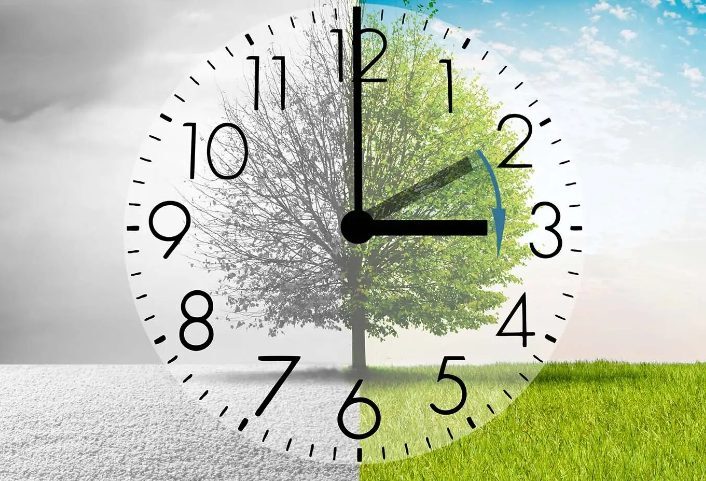Daylight saving time (DST) may be a frustrating adjustment for humans, but for trees, the shift in our clocks means nothing. However, the underlying reason for this time change—seasonal shifts in daylight hours—has a significant impact on trees and their growth cycles. Trees are naturally tuned to respond to changes in light duration, temperature, and seasonal cues. As homeowners, understanding how trees react to these changes can help us support their health and growth throughout the year.
How Do Trees Perceive and Respond to Seasonal Light Changes?
Unlike humans, who rely on clocks, trees use a biological process called photoperiodism to track changes in daylight length. This internal mechanism helps them determine when to grow, shed leaves, enter dormancy, or prepare for budding in the spring.
As days shorten in the fall, trees sense the decrease in daylight and trigger biochemical changes that lead to dormancy. Deciduous trees, for example, begin breaking down chlorophyll, causing leaves to change color and eventually fall. This process helps conserve energy and protect against cold temperatures. In the spring, increasing daylight signals trees to resume growth, produce new leaves, and prepare for the growing season.
How Have Trees Adapted to Seasonal Light Variations?
Over millions of years, trees have developed ways to adapt to changing daylight hours:
- Dormancy Cycles: Trees in temperate climates enter a period of dormancy when daylight hours decrease and temperatures drop. This survival mechanism conserves energy and prevents damage during freezing conditions.
- Leaf Shedding: Deciduous trees drop their leaves to minimize water loss and reduce the risk of damage from snow and ice accumulation.
- Bud Development Timing: Trees regulate bud formation based on day length and temperature, ensuring they don’t bud too early and risk damage from late frosts.
- Growth Rate Adjustments: Trees grow more rapidly when daylight hours are longest in summer and slow down when days begin to shorten in the fall.
- Photosynthesis Regulation: Even evergreen trees adjust their photosynthesis rate based on light availability, slowing down energy production in winter when light is limited.
How Can Homeowners Support Trees During Seasonal Light Changes?
While trees have evolved to handle changing daylight hours, there are ways homeowners can support them during these transitions:
- Mulching: Apply mulch around the base of trees in fall to help insulate roots from temperature fluctuations and retain soil moisture.
- Watering: Adjust your watering schedule based on seasonal needs. Trees require less water in winter but may need additional hydration during dry fall months before the ground freezes.
- Pruning: Late winter or early spring is the best time to prune most trees, as they are still dormant and can recover quickly when growth resumes.
- Fertilization: Provide nutrients in the fall to help trees store energy for winter dormancy and support spring growth.
- Protection from Frost Damage: For young or sensitive trees, consider wrapping trunks or using burlap covers during extreme winter cold snaps.
- Planting with Photoperiodism in Mind: If you’re planting new trees, consider species that are well-adapted to your local climate and daylight patterns to ensure they thrive year-round.
While trees don’t rely on daylight saving time, they are deeply influenced by the natural shifts in daylight hours throughout the year. Understanding how trees respond to seasonal changes allows us to provide the best care possible. By making small adjustments in how we water, mulch, and protect our trees, we can help them transition smoothly through the seasons and maintain a healthy landscape all year long. If you need assistance caring for your trees during seasonal changes, contact Homer Tree Care for expert advice and services!

